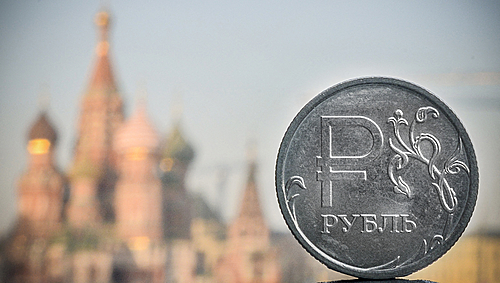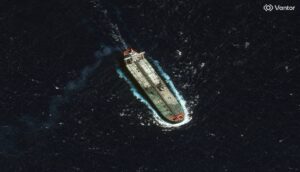
Russia is completing the third consecutive week of strong devaluation of its currency. After the crisis caused by the rebellion of the Wagner group, the ruble even dropped to 93 rubles against the dollar and 100 rubles against the euro in the last week. The Russian economy has not seen such a significant drop in its currency since March 2022, shortly after the start of the Ukraine war, when the ruble reached 135 per dollar.
Even after the Wagner crisis was resolved without drastic changes in Russian politics, the devaluation remained at a level of around 90 rubles per dollar and is about to complete the third consecutive week of decline in the currency. The director of the Central Bank of Russia, Elvira Nabiulina, attributed the fluctuation of the currency to external factors. According to her, the currency oscillation is largely caused by the dynamics of foreign trade.
“We see that when the exchange rate weakens, various conspiracy theories start. As if there was a special easing to increase budget revenues, or some other theory. But first of all we must look at the dynamics of foreign trade. It largely determines the movement of the exchange rate. For example, the large-scale strengthening of exchange rates last year was perceived by many as a victory over circumstances. But we must honestly admit that this was still the result, first of all, of a sharp increase in exports and a fall in imports, ”he said.
Despite not directly mentioning the Wagner group mutiny as a factor of instability that caused the fall of the Russian currency, the director of the Central Bank mentioned that recently there was a significant withdrawal of Russian capital, which leads to the devaluation of the currency. To the Brazil in Factthe economist of the Institute of Applied Economic Research of the Russian Academy of National Economy, Andrey Zubarev, points out that the withdrawal of capital is precisely one of the effects of a period of instability and uncertainty.
“One of the main key factors was undoubtedly the high degree of indeterminacy linked to the events of Wagner. Of course, everyone was in shock and today there are statistics, the [Elvira] Nabiulina, head of the Central Bank of Russia, declared that in the following days [ao motim], due to high instability, a colossal amount of money was withdrawn from Russian accounts. It is clear that no one withdrew rubles to invest in rubles, people probably withdrew as much as possible to transfer in another currency, ”he says.
Parallel to the political turmoil is the extension of the West’s economic sanctions against Russia, initiated on a large scale after the outbreak of the war. This has a direct effect on the dynamics of the country’s imports and exports, as European restrictions prohibit exports of certain Russian products, and Russians cannot import a series of products from Europe either. And, consequently, this also affects the exchange rate.
This trade dynamic imposed by the sanctions, paradoxically, is what caused the ruble to stabilize and register a steady appreciation, not passing the mark of 75 rubles to the dollar for more than a year, since it began to recover in the middle of the month March 2022.
“There are factors linked to sanctions that influence the fall of the ruble, and there are factors related to sanctions that influence the strengthening of the ruble. And the restriction on imports that we evaluated a year ago precisely strengthened the ruble, because if nobody sells import products, what is the need for dollars? You can’t buy anything from them. And the ruble became strong, because there was no demand for the dollar,” explains Zubarev.
On the other hand, the economist notes that the restriction on Russian exports, which means that Russian products are less and less sold, and this reflects negatively on the ruble exchange simply because there is less income.
Along with this process, low oil prices over the past 2-3 months have reinforced the imbalance between imports and exports, further fueling the fluctuating dynamics of the Russian currency. And what the indices show is that there was a small recovery in imports from Russia.
Analyst Andrey Zubarev observes that there are no clear and reliable statistics on import data from Russia because sanctions with the West remain in force, but there has been an increase in parallel imports, made through countries such as Kazakhstan, Armenia, and other countries in the Eurasian Customs Union.
The analysis is shared by economist Nikolai Kulbaka, who maintains that, in the first place, “Russian exports are starting to fall due to restrictions, part of the foreign exchange revenue was tied up with intermediaries abroad, that is, less currency enters the country”. “At the same time, in principle, imports have recovered, which means that currency is needed to buy goods abroad. The demand for the currency is growing,” said Kulbaka, quoted by RTVI.
It is a consensus among economists that the devaluation of the currency is caused by a series of factors that are linked together, however, it is also agreed that the main cause – the evasion of foreign capital from the country – was intensified by the instability caused by the crisis of the group Wagner.
“Capital outflow, apparently, will now grow, because after Prigozhin’s rebellion, risks in the economy have sharply increased, an additional scenario has appeared, and businesses have become more active in withdrawing money. All this led to the fact that the ruble began to sink,” added Kulbaka.
In addition, according to the economist, there are a large number of actors interested in the cheap ruble, above all Russian exporters and the “budget”, that is, the Ministry of Finance.
“The Ministry of Finance needs to top up the budget. It’s good for him that the ruble is cheap, so he can do without turning on the printer. In fact, this is happening, but the Russian economy is weaker and our inflation is not very low, so this all works against the ruble”, he adds.
The official discourse of the Russian authorities maintains that, despite great pressure from the international community, Russia has proved resilient economically and maintained stability. Economist Andrey Zubarev agrees that Moscow can maintain satisfactory growth rates, but pointed out that the impact on people’s lives may be unavoidable in the context of sanctions and currency fluctuation, as the exchange rate affects market prices due to substance use. imported.
An example affected by this is the case of the supply and production of medicines in the country. Russian drugmaker Geropharm recently reported that not only imported substances are getting more expensive, but also the substances needed for their production, as companies buy abroad due to unequal import substitution – at prices 1.5 to 2 times higher.
According to Zubarev, this is an aspect that is rarely discussed in economic analyzes in Russia, but which, in his opinion, is something that needs to be said. “Not everything can be measured in income, in ruble, GDP. There are quality of life indices that are not measured by this. When necessary medical equipment is lacking, when certain household appliances that we have become used to are lacking, when certain medicines are lacking. This is not measured, it is not reflected in the GDP. In other words, the quality of life is diminished”, he adds.
Editing: Thales Schmidt
Source: www.brasildefato.com.br

